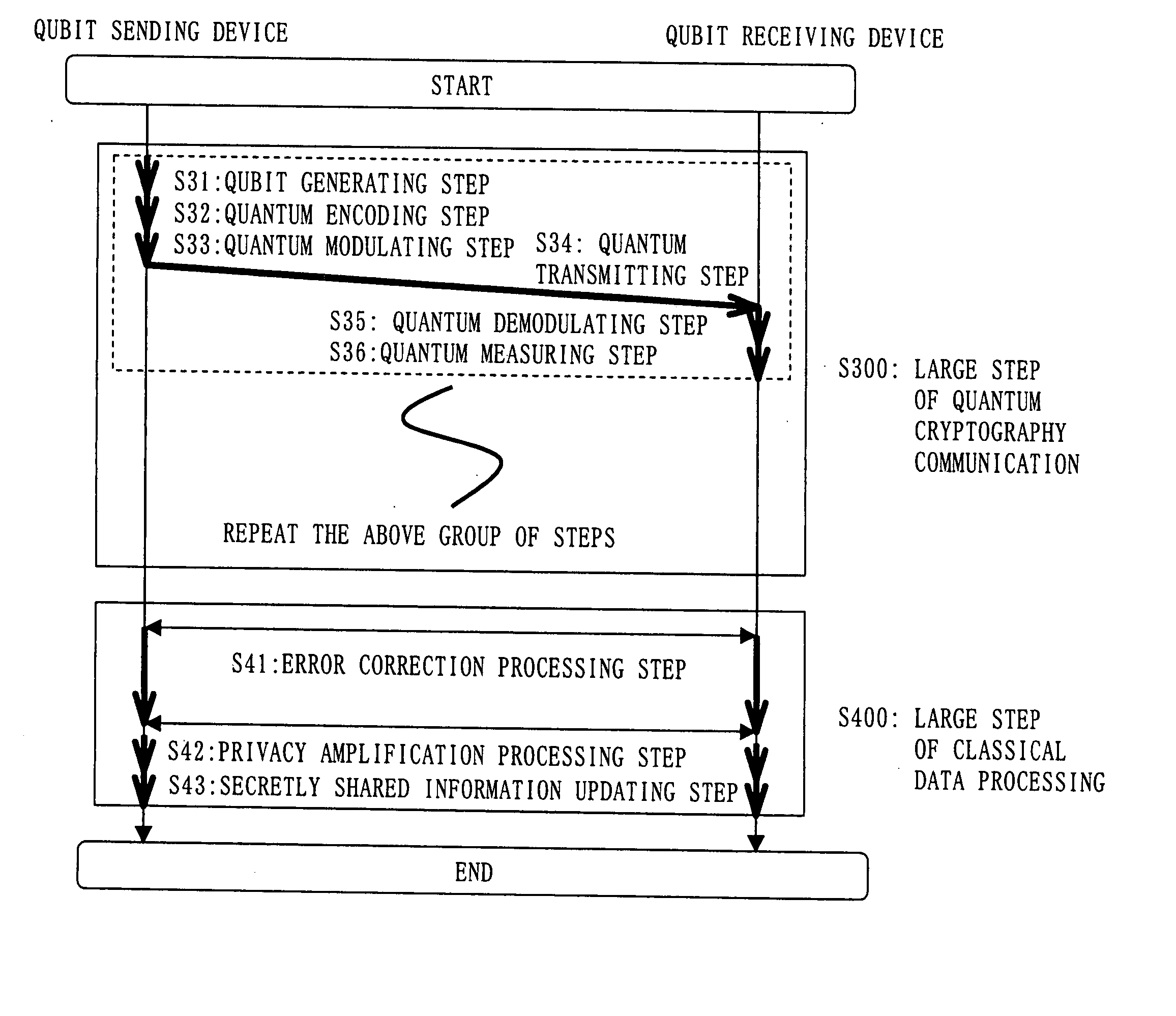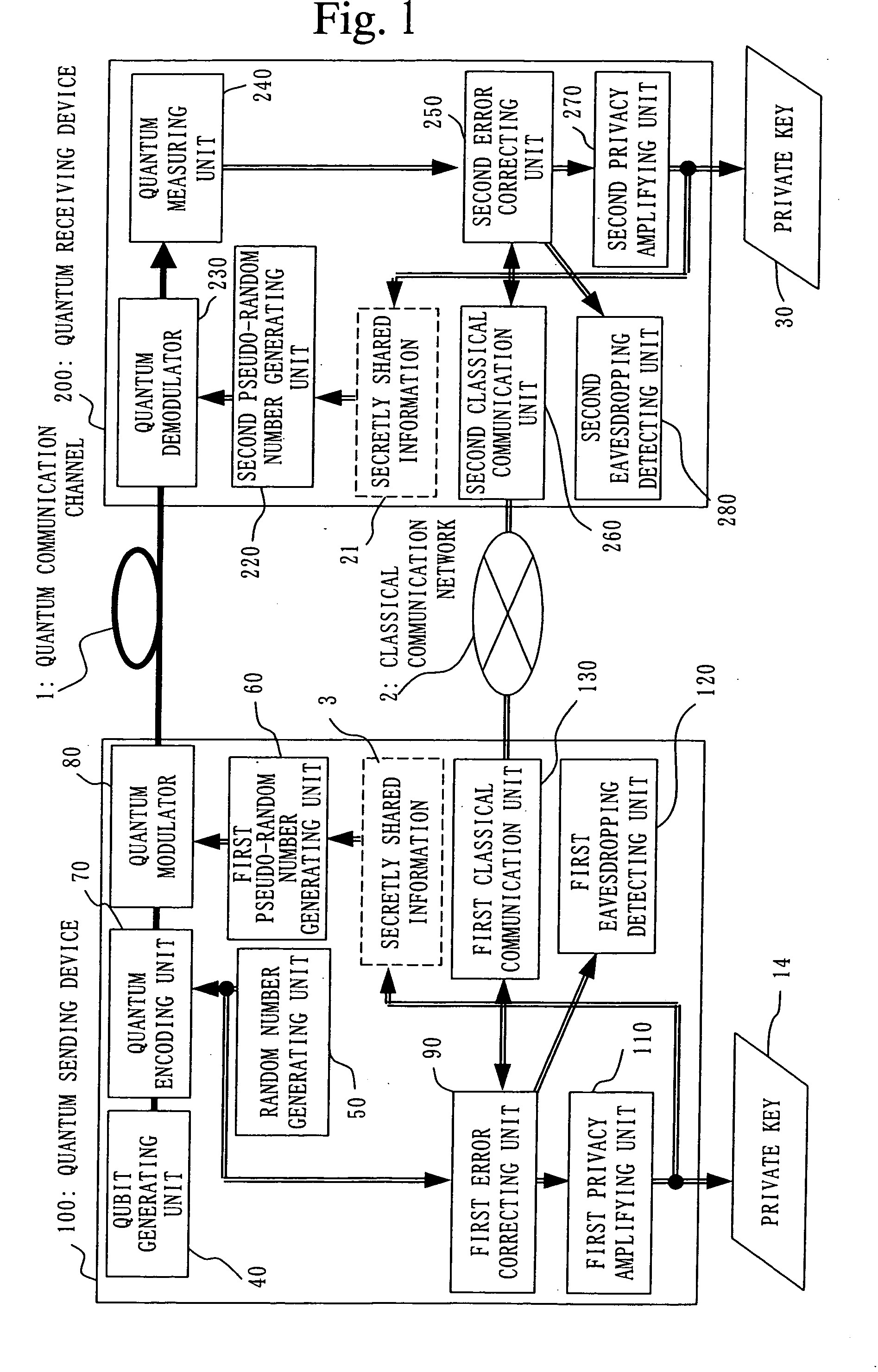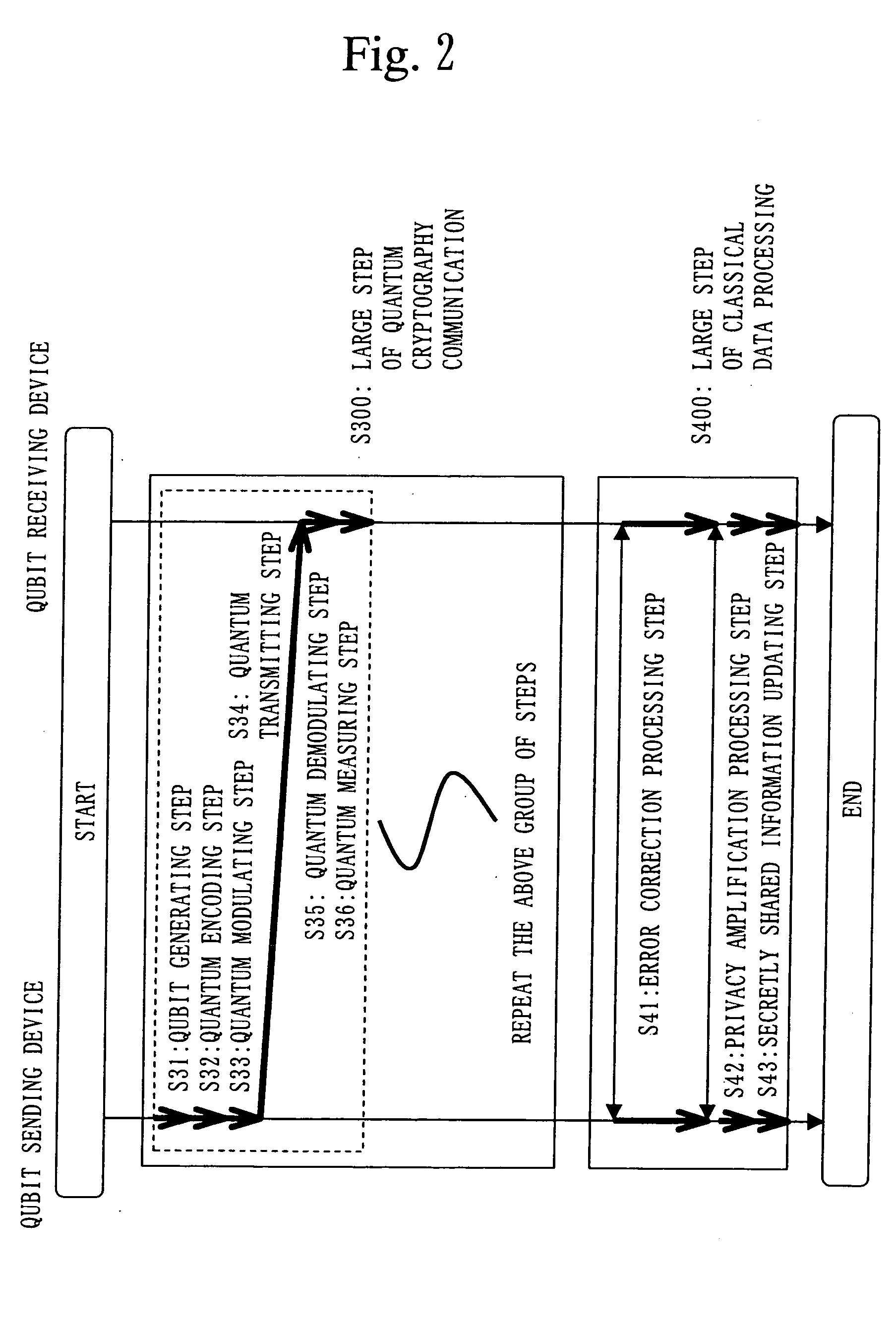Crytographic communication apparatus
a communication device and quantum cryptography technology, applied in the direction of coding theory basic assumptions, digital transmission, coding bounds, etc., can solve the problems that the device of authentication must be performed in classical communication, and the eavesdropper cannot always perform correct quantum demodulation. , the problem of a half (about 23)
- Summary
- Abstract
- Description
- Claims
- Application Information
AI Technical Summary
Problems solved by technology
Method used
Image
Examples
embodiment 1
[0084]FIG. 1 shows a whole configuration chart of Embodiment 1.
[0085] In FIG. 1, the quantum sending device 100 and the quantum receiving device 200 are connected by the quantum cryptography communication channel 1 for transmitting a qubit from the quantum sending device 100 to the quantum receiving device 200.
[0086] The classical communication network 2 is a communication network which connects the quantum sending device and the quantum receiving device.
[0087] The secretly shared information 3 and the secretly shared information 21 are secret information which have been shared in advance between the quantum sending device and the quantum receiving device.
[0088] An internal configuration of the quantum sending device 100 will be explained.
[0089] A qubit generating unit 40 outputs a predefined qubit
|0>
periodically. Here, as the qubit, a polarization state of a photon, which is [0090] for qubit |0>, horizontal polarization state |H>, and for qubit |1>, vertical polarization sta...
embodiment 2
[0159] In this embodiment, an embodiment of adopting a phase state of a photon as a qubit and performing the quantum cryptography communication using a Mach-Zehnder interferometer is described.
[0160]FIG. 3 shows a whole configuration chart of Embodiment 2. A Mach-Zehnder interferometer 900 includes the qubit generating unit 40, a first phase modulator 81, a quantum communication channel 101, a quantum communication channel 102, the quantum measuring unit 240, and a second phase modulator 231. Difference in configuration from Embodiment 1 is the configuration of the qubit generating unit, the quantum encoding unit, the quantum modulator, the quantum communication channel, the quantum demodulator, and the quantum measuring unit.
[0161] Below, component parts which are different from Embodiment 1 are explained.
[0162] The qubit generating unit 40 includes a single-photon source 700, a beam-splitter 350, and a mirror 400.
[0163] A photon which has been output from the single-photon sou...
embodiment 3
[0183] In the above embodiments, the qubit generating unit has been provided in the quantum sending device 100. In this embodiment, the system can be realized also with a configuration where the qubit generating unit is provided in the quantum receiving device 200 (document 5: G. Ribordy, J.-D. Gautier, N. Gisin, O. Guinnard, H. Zbinden, “Automated “Plug & Play” Quantum Key Distribution,” Electronics Lett. 34, PP. 2116-2117, (1998)).
[0184]FIG. 4 shows a whole configuration chart of Embodiment 3. In this embodiment, as illustrated in FIG. 4, a forward path and a return path between the quantum sending device and the quantum receiving device are provided respectively as the quantum communication channels (a quantum communication channel in a forward path 105 and a quantum communication channel in a return path 106). However, it is also possible to realize a configuration in which an identical optical path is used as a forward path and a return path by using an optical path control un...
PUM
 Login to View More
Login to View More Abstract
Description
Claims
Application Information
 Login to View More
Login to View More - R&D
- Intellectual Property
- Life Sciences
- Materials
- Tech Scout
- Unparalleled Data Quality
- Higher Quality Content
- 60% Fewer Hallucinations
Browse by: Latest US Patents, China's latest patents, Technical Efficacy Thesaurus, Application Domain, Technology Topic, Popular Technical Reports.
© 2025 PatSnap. All rights reserved.Legal|Privacy policy|Modern Slavery Act Transparency Statement|Sitemap|About US| Contact US: help@patsnap.com



